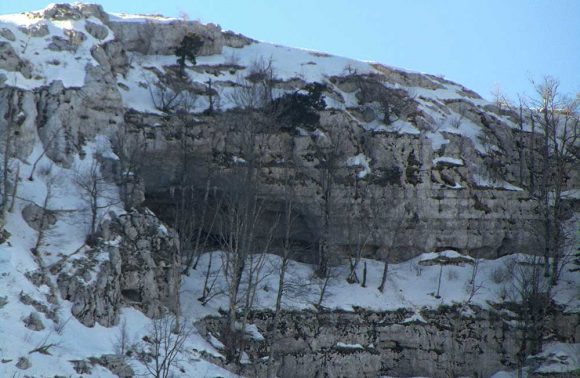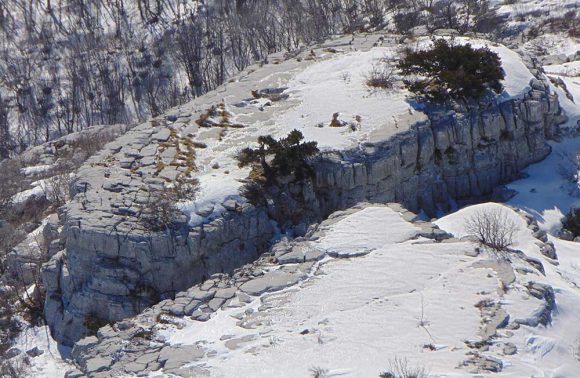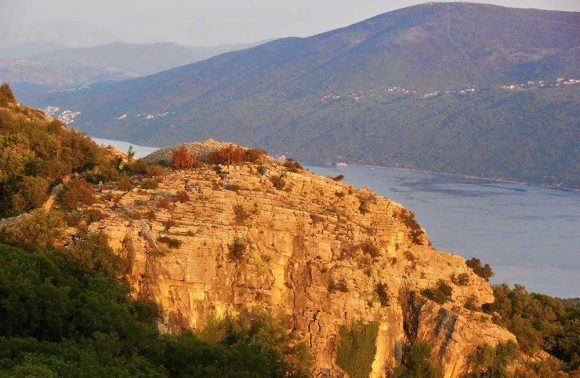Narratives, legends and popular beliefs (Folks beliefs)
Orjen was always attractive for a nearby population,and dispite its harsh environment,people used to spend time there. In peaceful times people used to breed livestock,cultivate soil and hunt. In wartime,Orjen represented a natural fortress,where it was more difficult to live in,than to be attacted by enemies,as it was as difficult to get through its limestone crags and caverns,as to find the way out. This kind of environment reflects in folks tales and legends. There is a legend related to the location Vilino gumno.,situated on the southern slopes of Subra(1579m),in themost isolated part of the rocky plateau,with many cracks and caverns. Vilino gumno is an isolated,elipse like karst plateau,surrounded by cliffs.
Story says that fairies live,high above,in the slopes of Dobrostica. They live in a cave,named after them,Vilina pecina. As fairies are creatures with wings,when the night comes,theycom to Vilino gumno(Fairy threshing floor) and dance. It is known that you shouldn’t play with fairies,sopeople avid this place.If a man dare to spend a night in Vilino gumno,fairies will drag him into their “kolo”(traditional folks dance) and no one will find him again.
Djevojacke grede
A cliff near a distinct mount,close to Kameno village,is known as Djevojacke grede. Story says that,long ago,members of two wedding parties met in this place (a superstition assumes that the meeting of two wedding parties is a bed omen), and their fight escalatet to the point where they were all killed and two brides jumped from the cliff in despair.
Believing in witches and werewolves
In Antropological stydy Boka(1913.) a priest Savo Nakicenovic says: people are religious, but still superstitious. They believe in witches. A witch is a woman that is possessed by some kind of evil spirit, and when she goes to sleep, the spirit comes out, becoming a moth, hen or a turkey, it flies around thehouses and eats people, especially young children. Whiches don’t eat garlic, so in the period of Slavic carnival, people rub the garlic on their chest, feeth and in the armpits. People believe that witches are most active in the period of Slavic carnival. There were cases when people threw stones on women that were believedto be witches. It of the happened in Mokrine (village situated in the southern part Nature park) in the time of Petar I Petrovic….
Believing in werewolwes, means believing that when a man dies, a third day of his death,devils take a man’s gutter, inflate it, and it becomes alive. It walks like a man
And scares people. It can’t live more than 40 days…
Act 142. of Dusan’s Code relates to burning of werewolwes. Even in that period these believes were widespread. If people didn’t know who had become a werewolf, they would bring a black horse, as they believed that the black horse couldn’t and wouldn’t come close to a vampire. These believes still exist…




